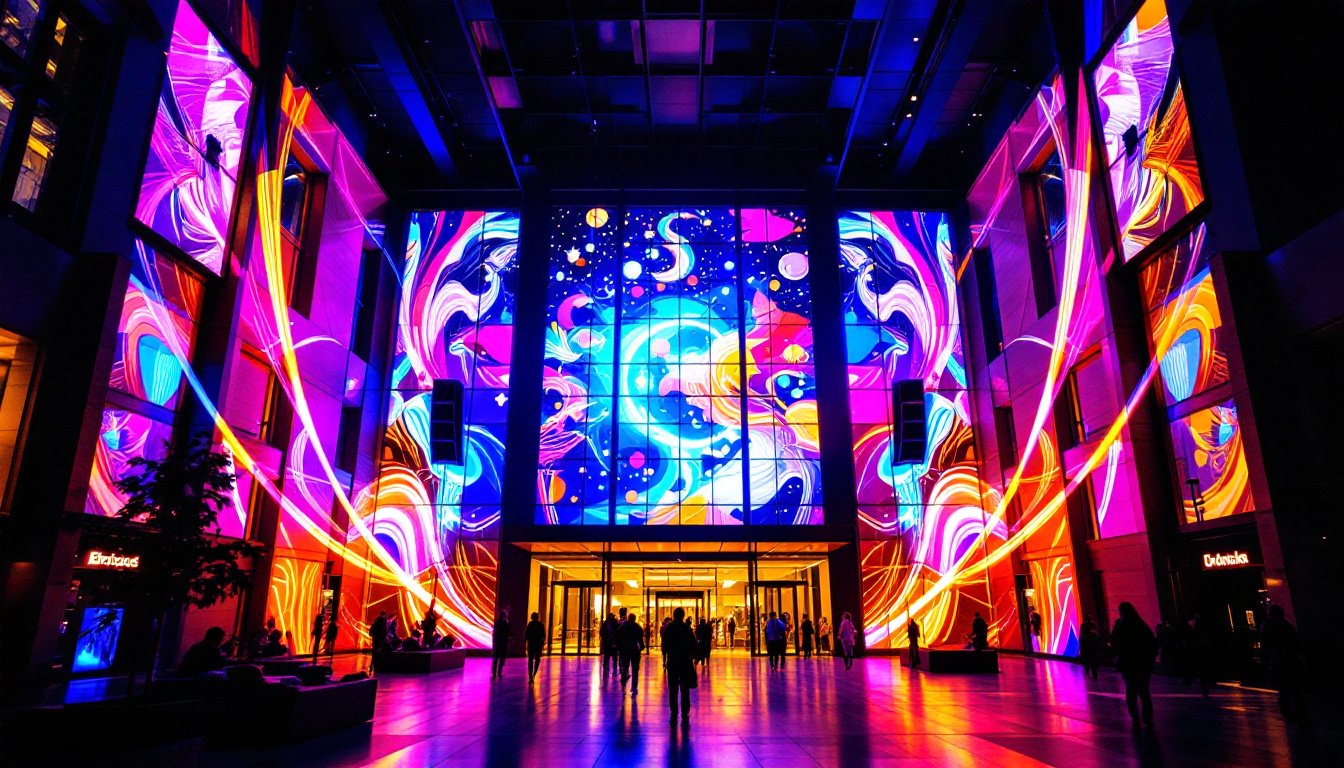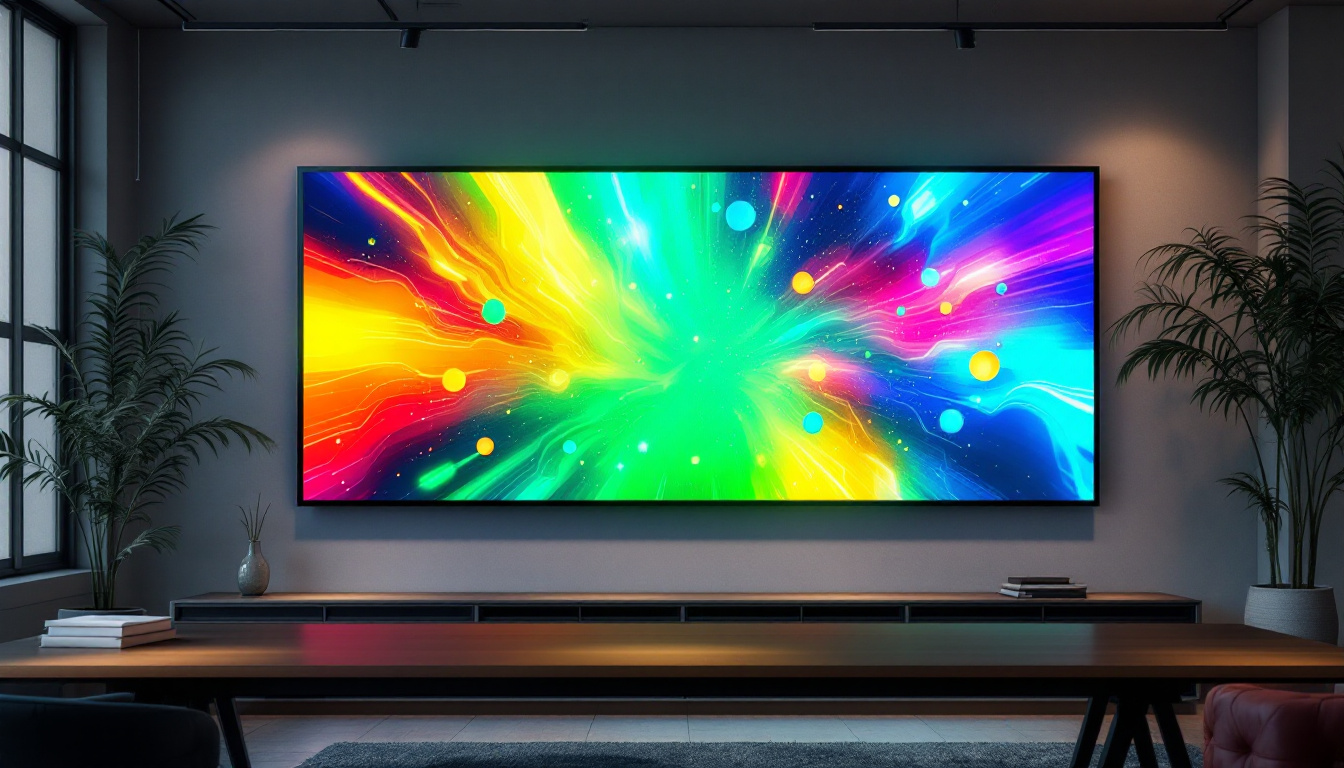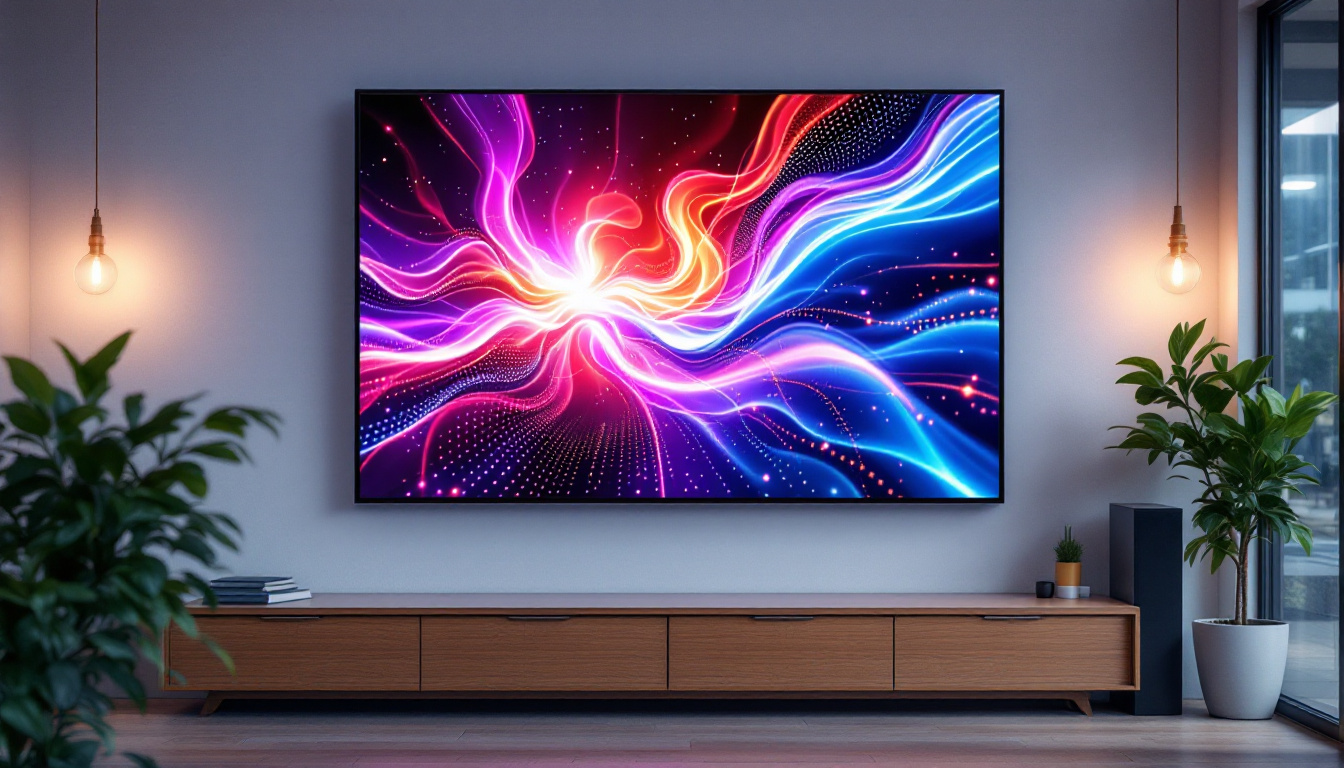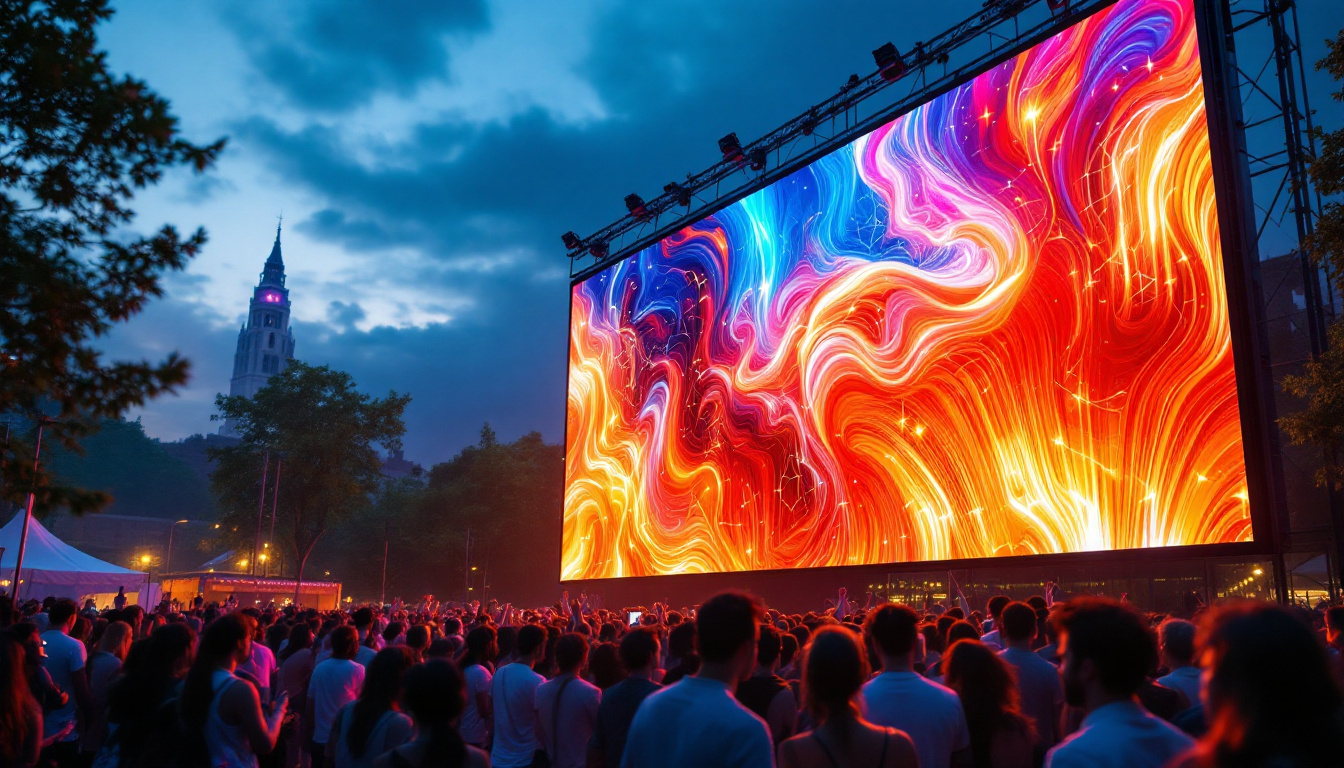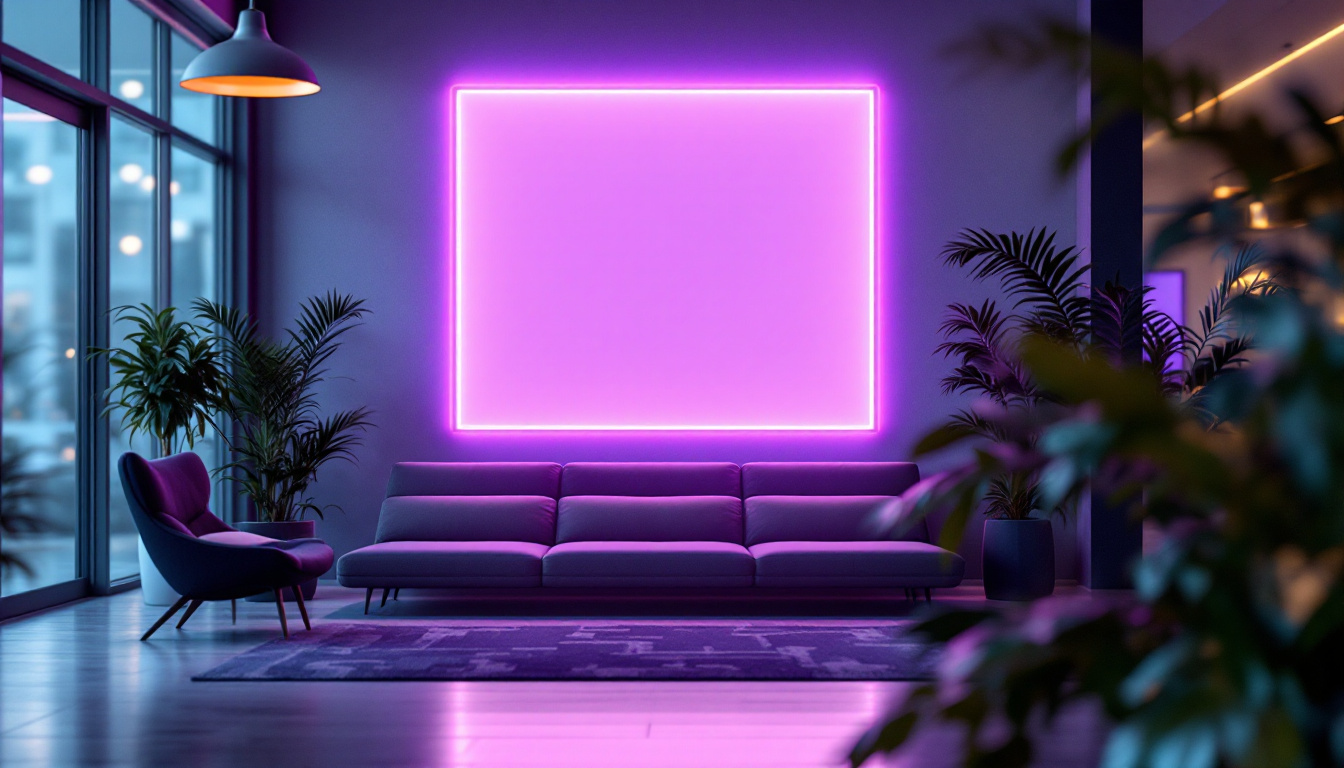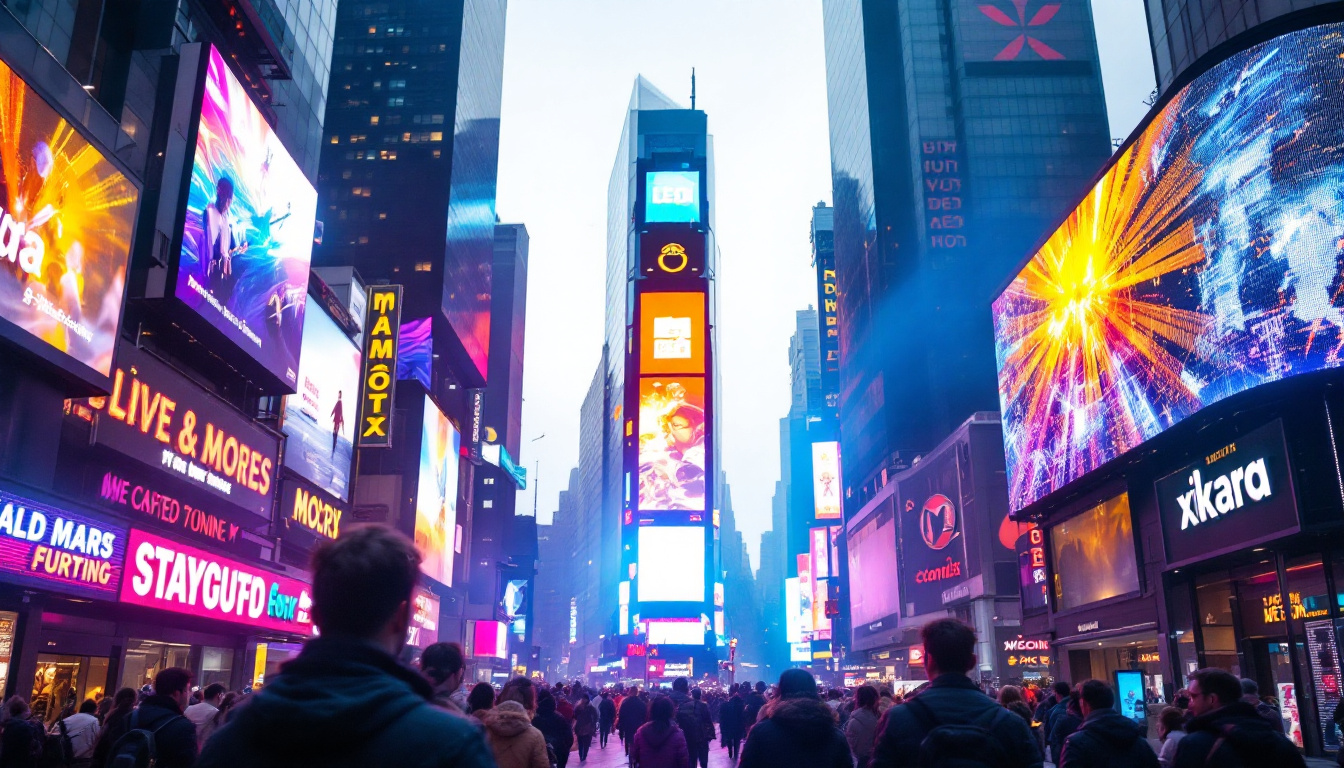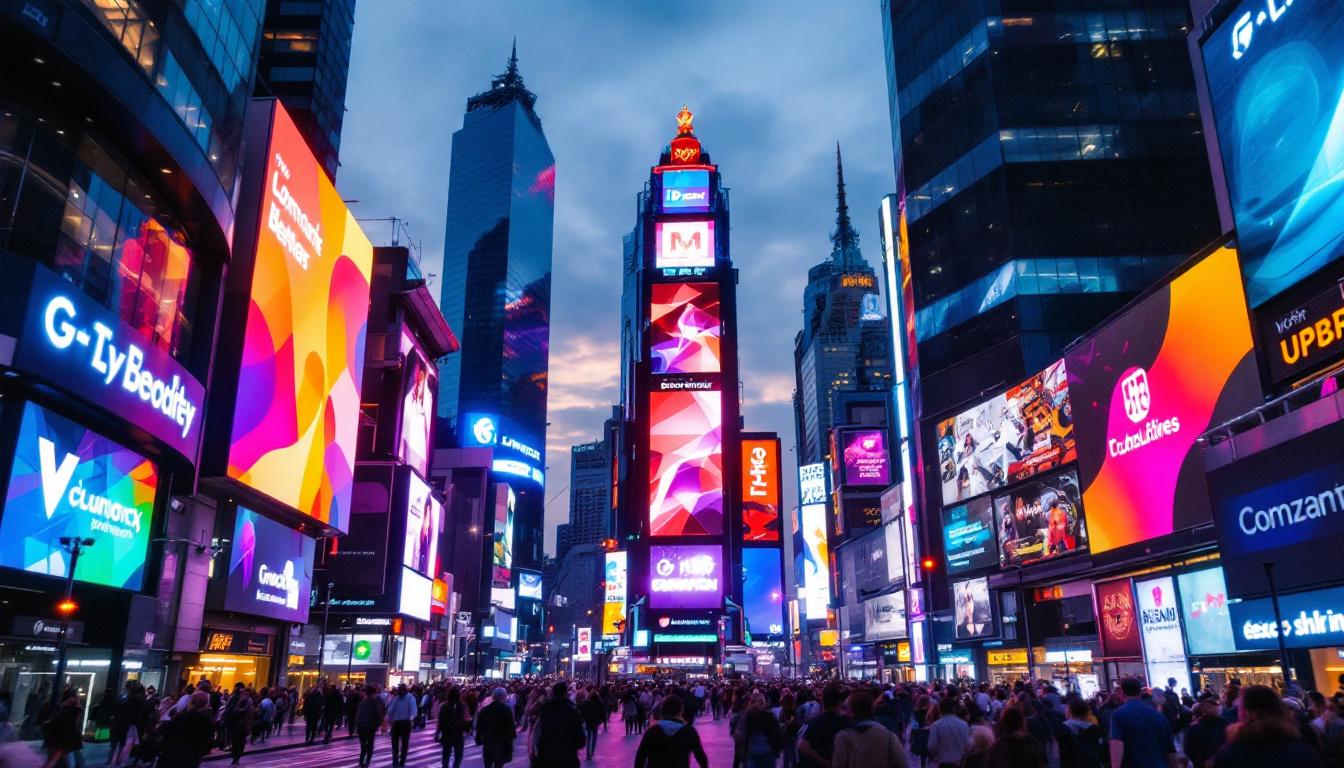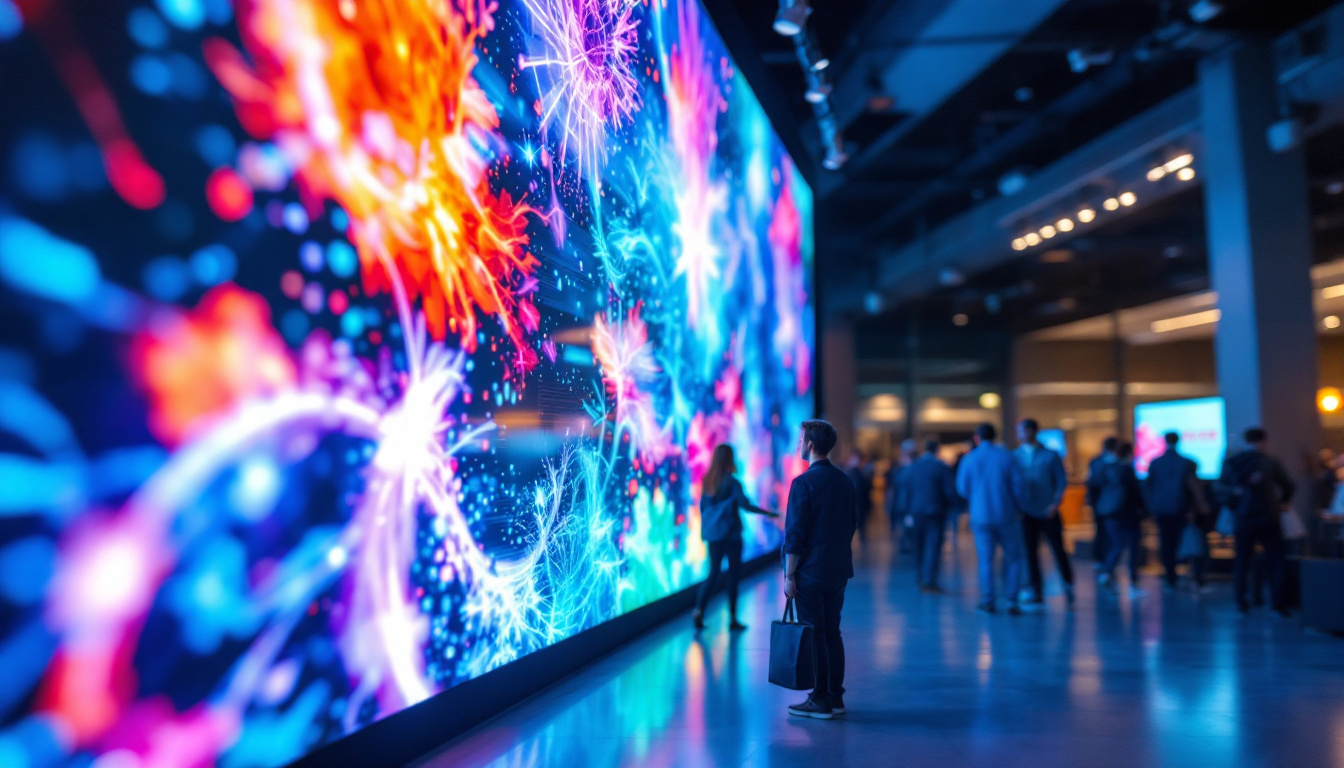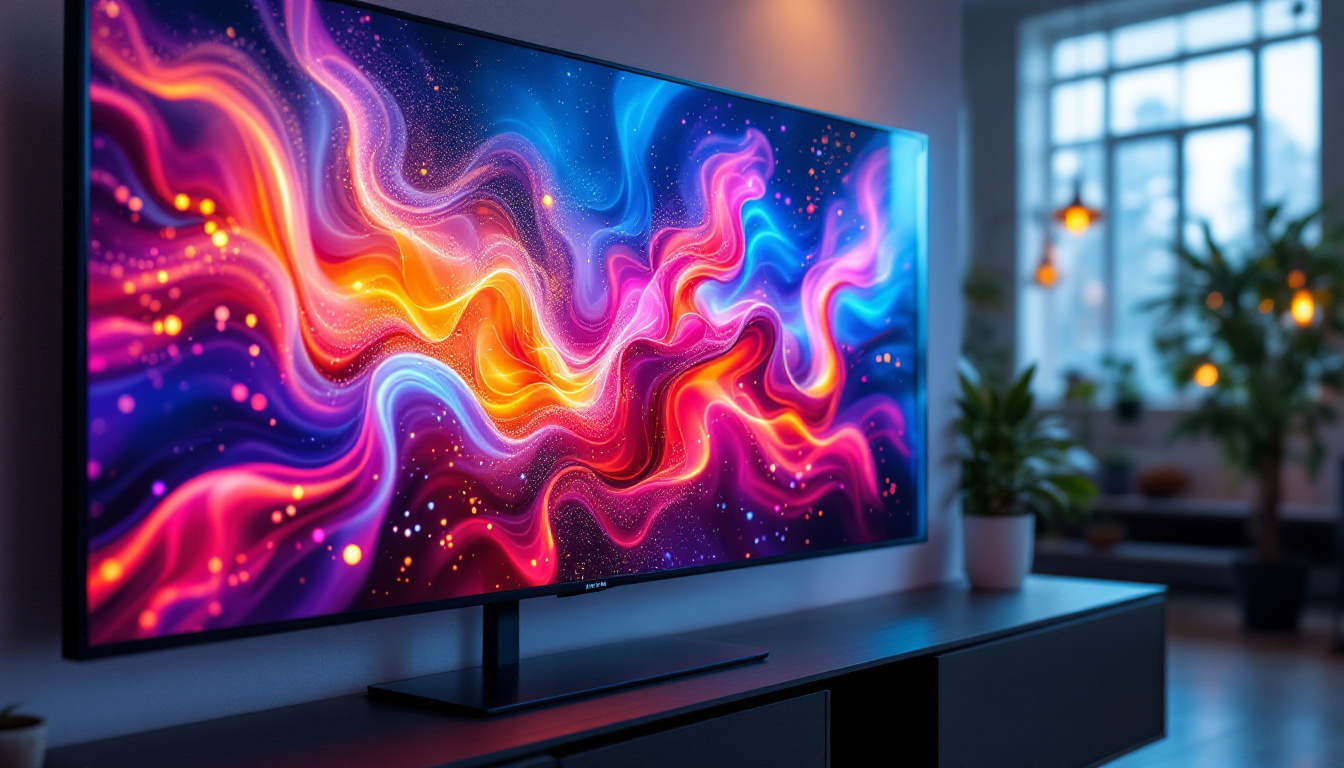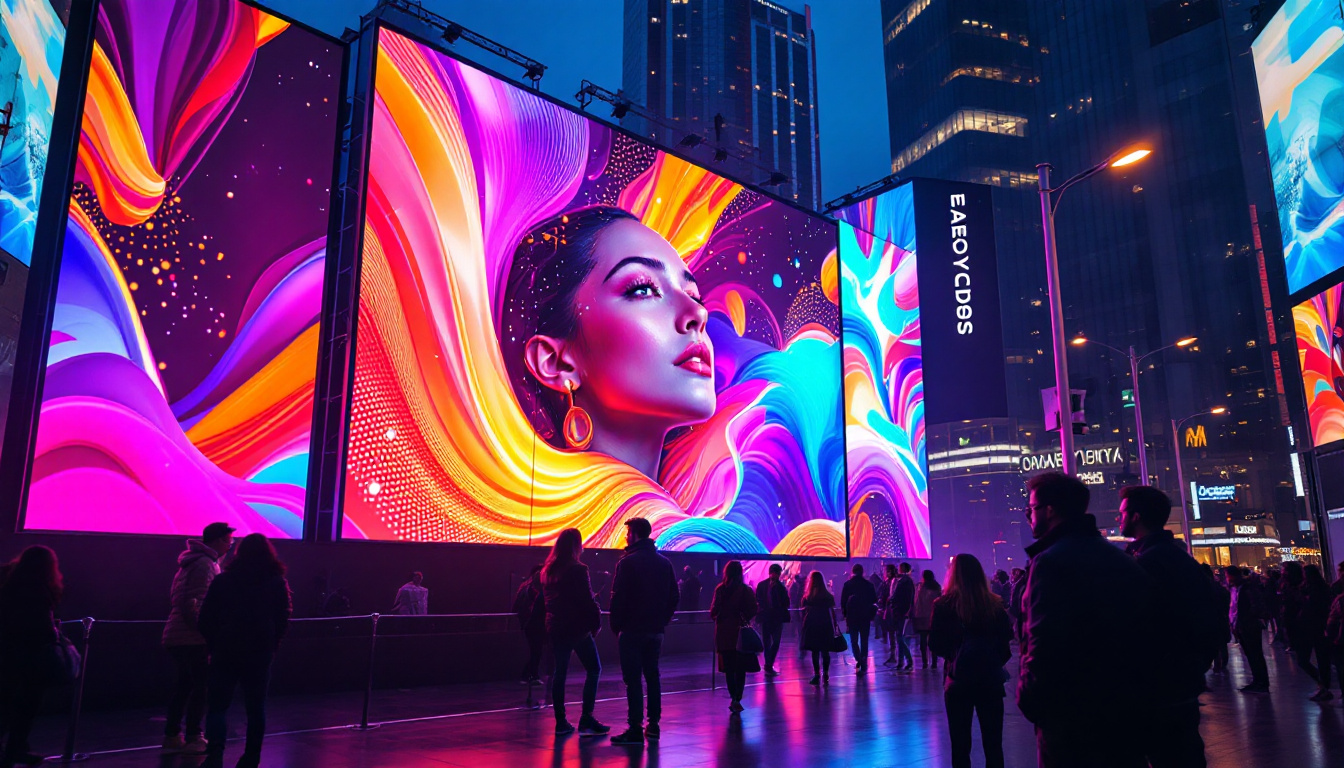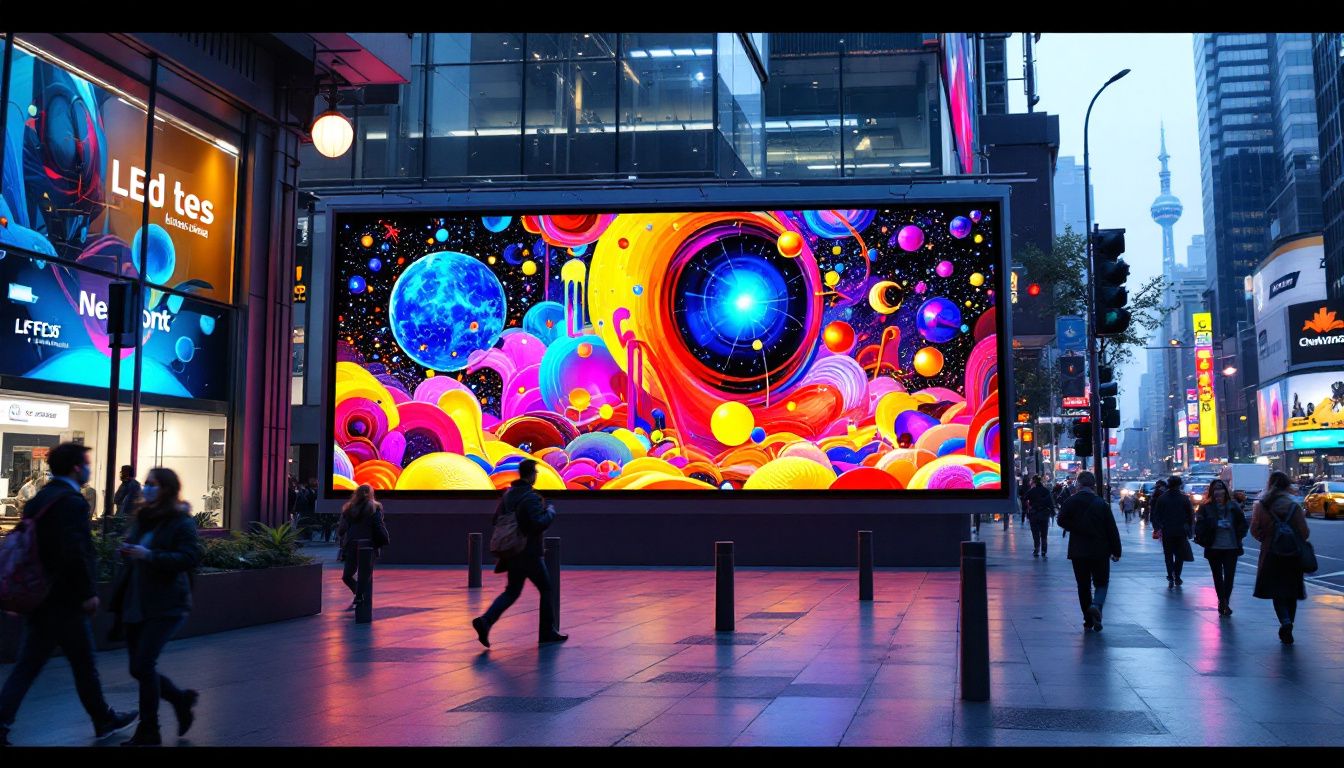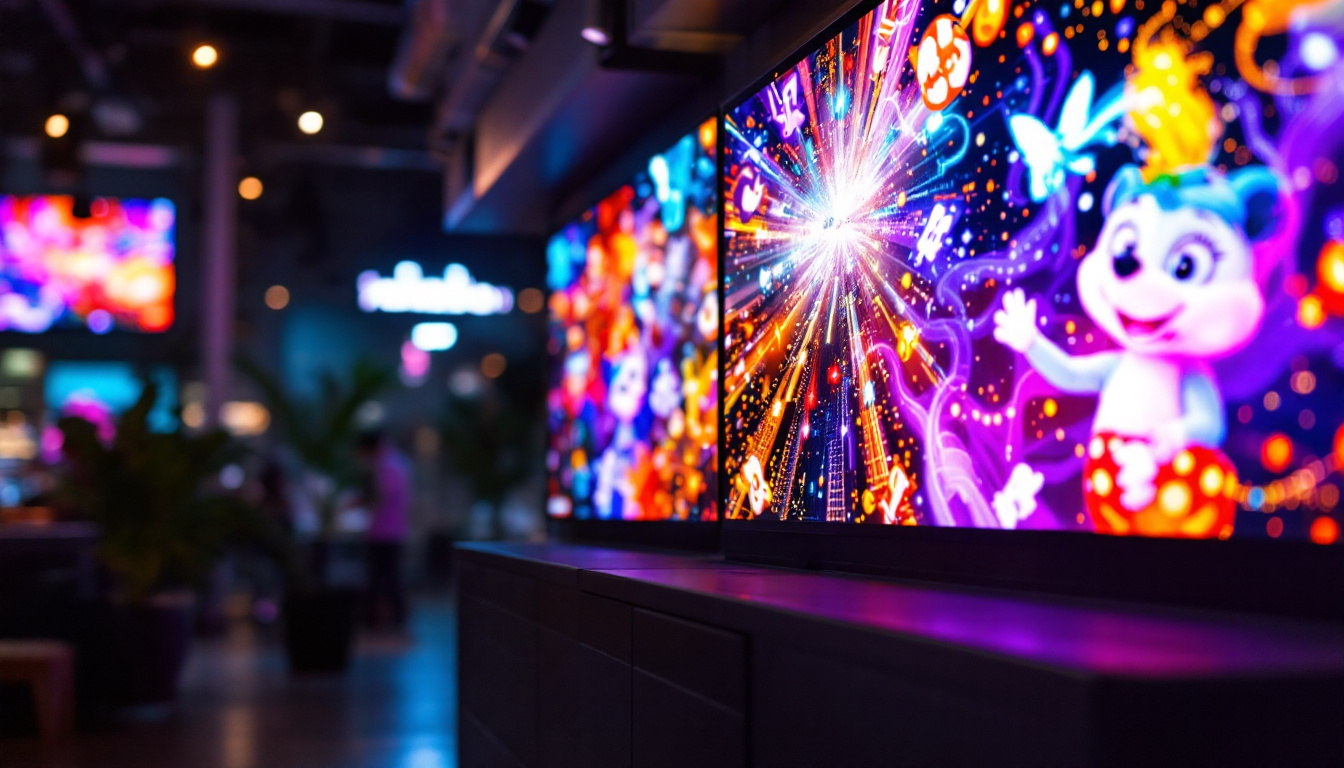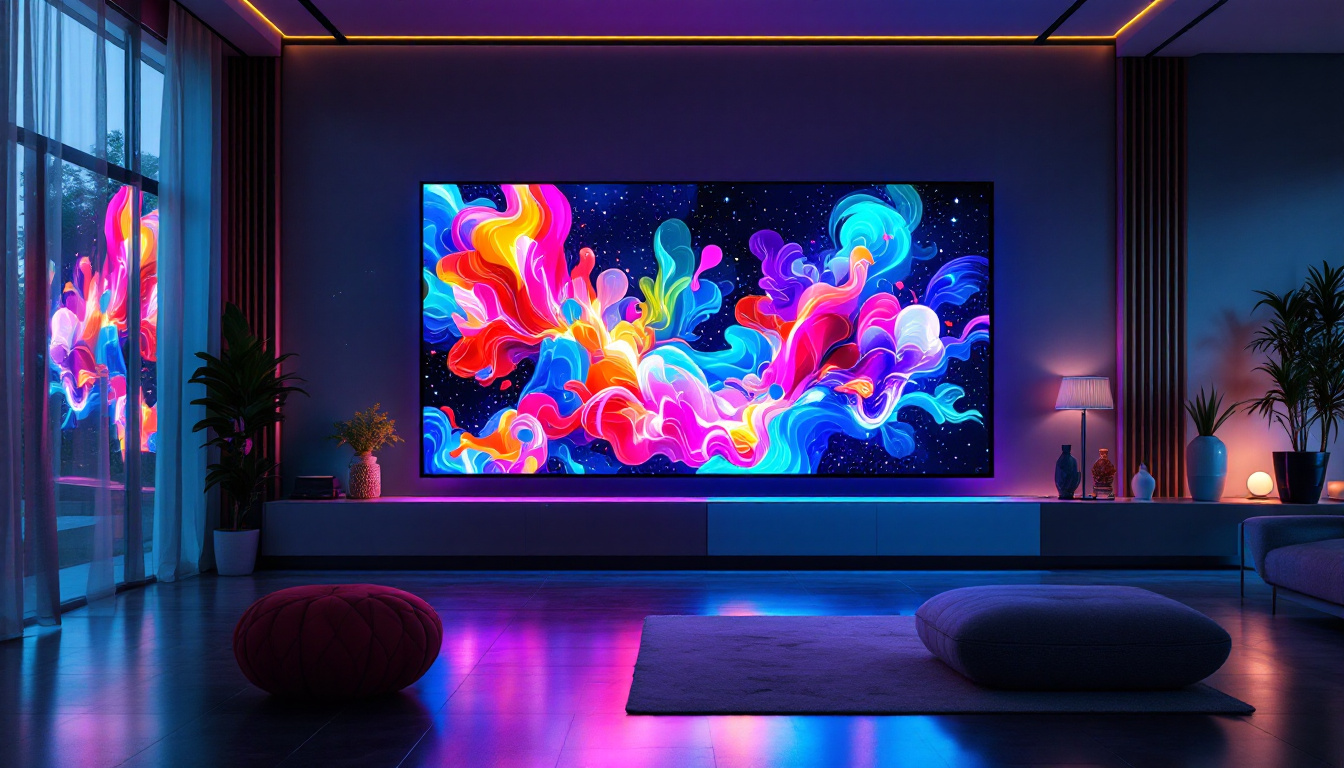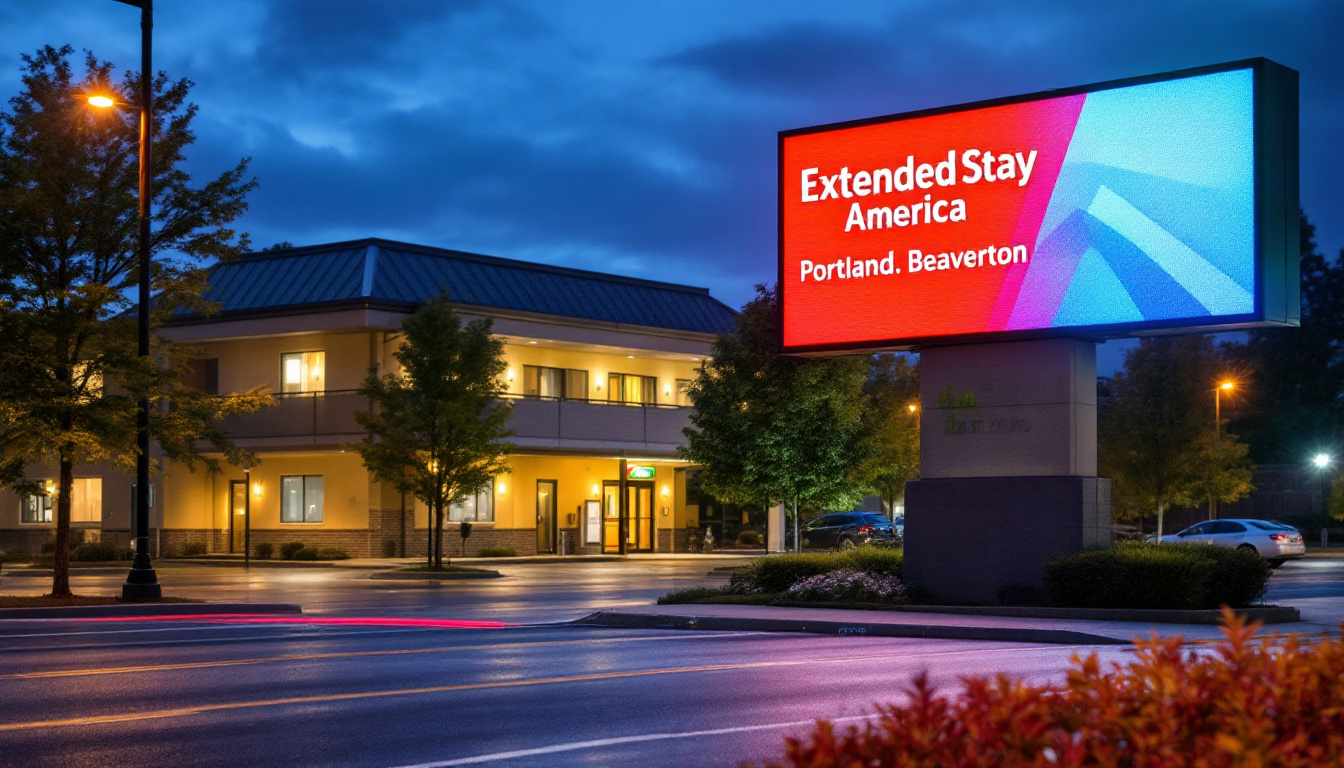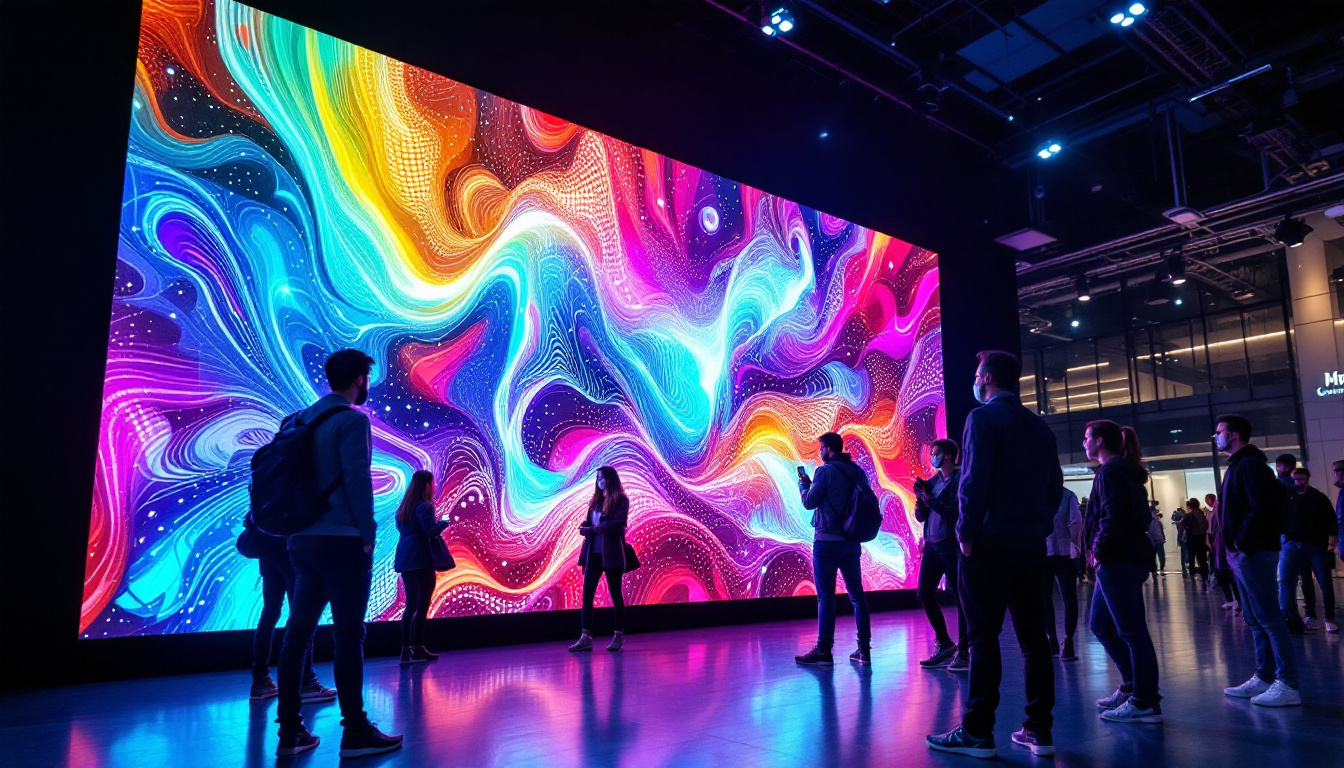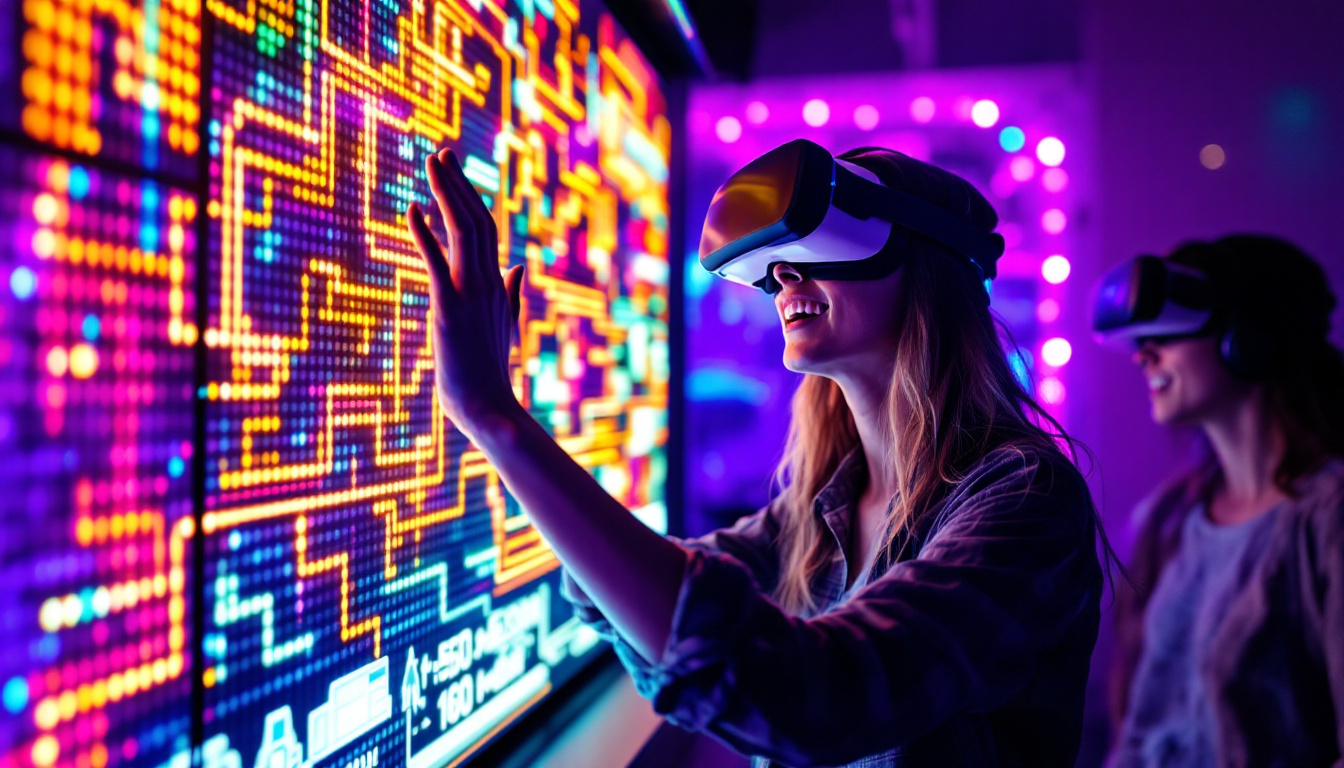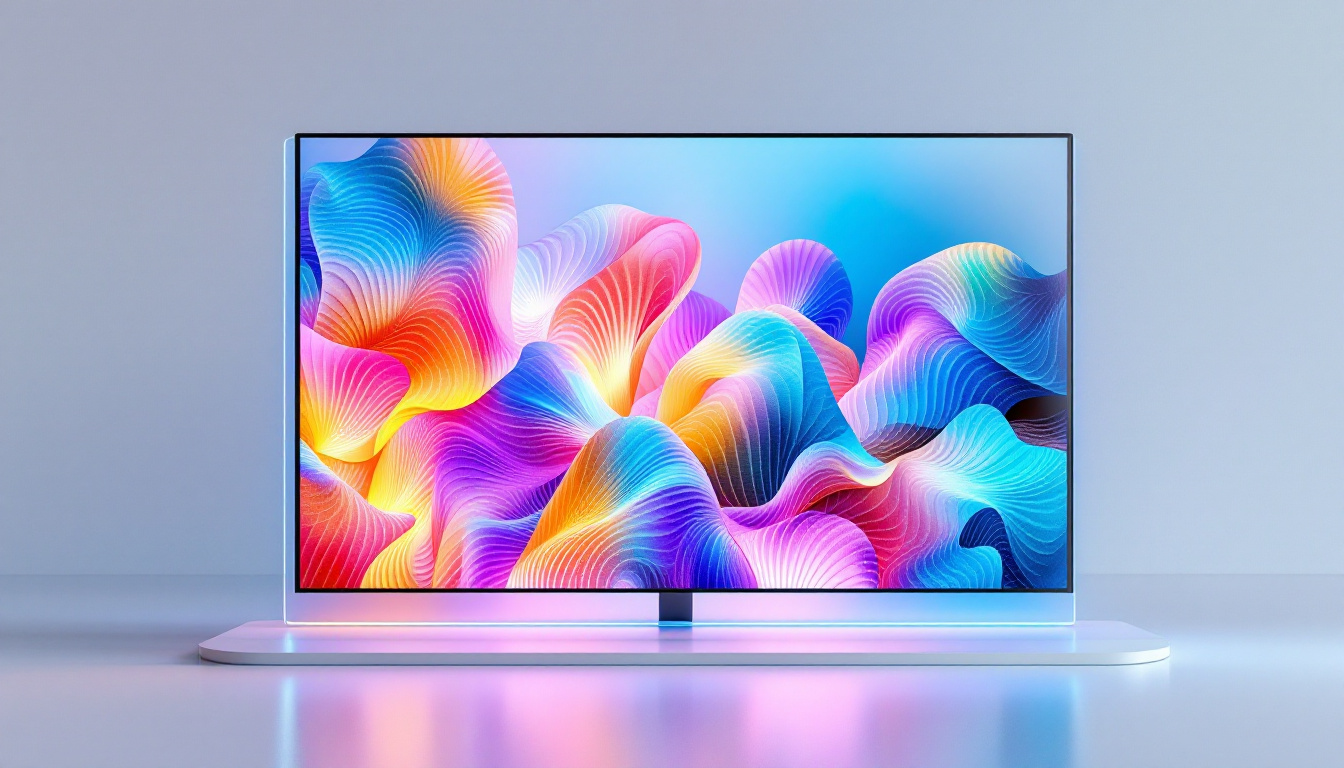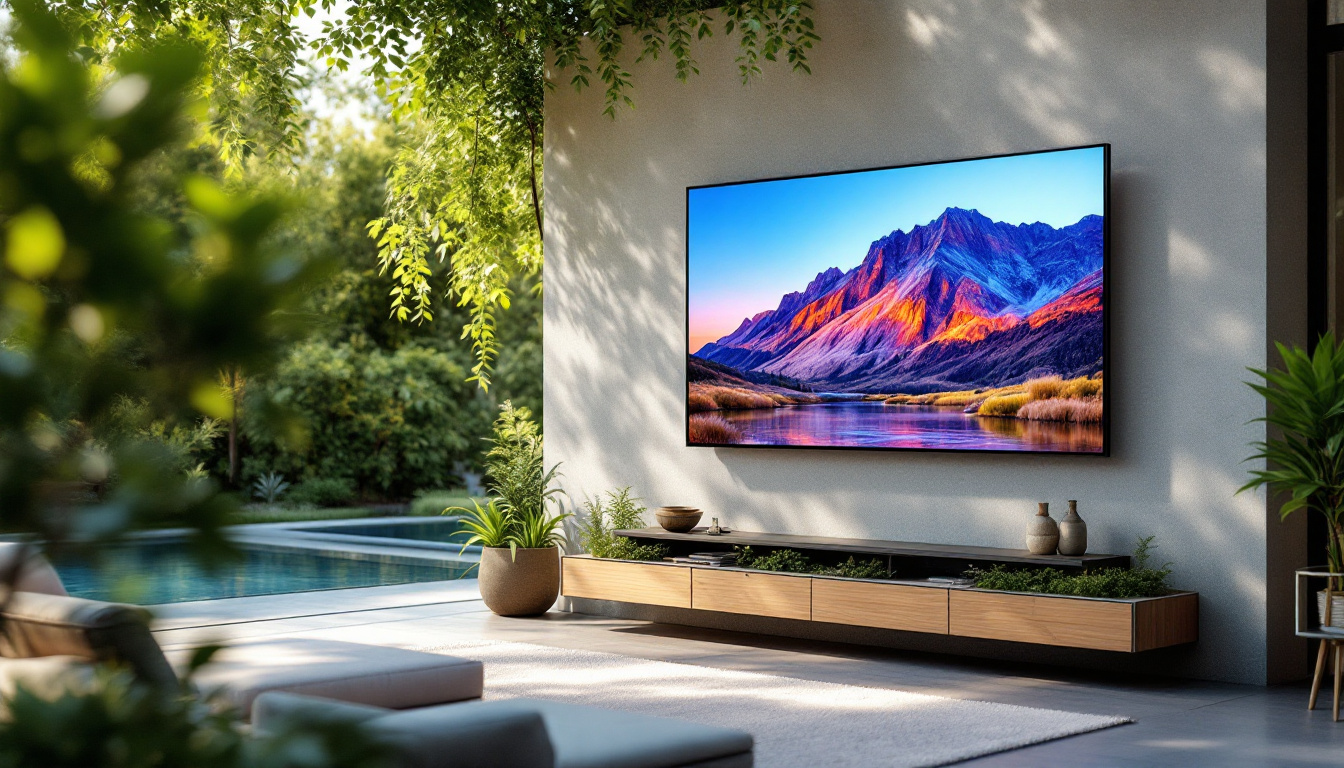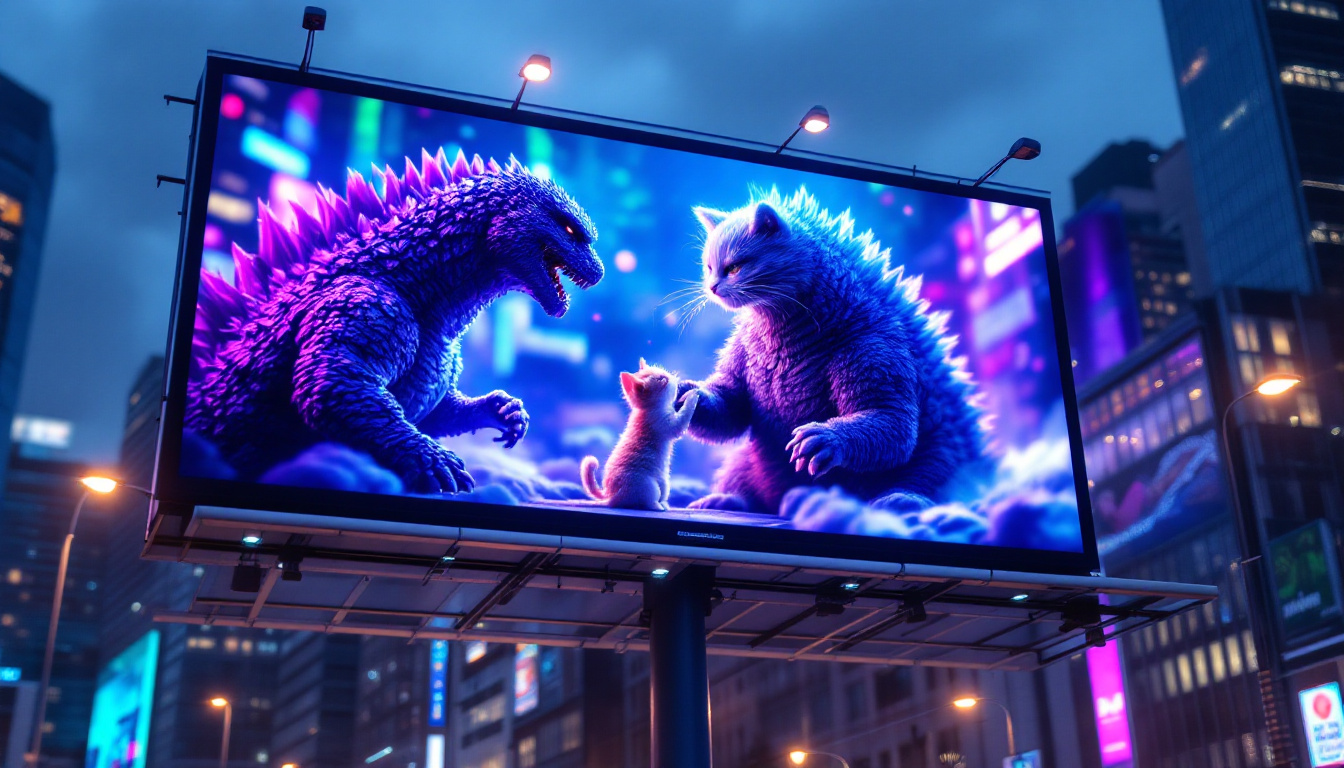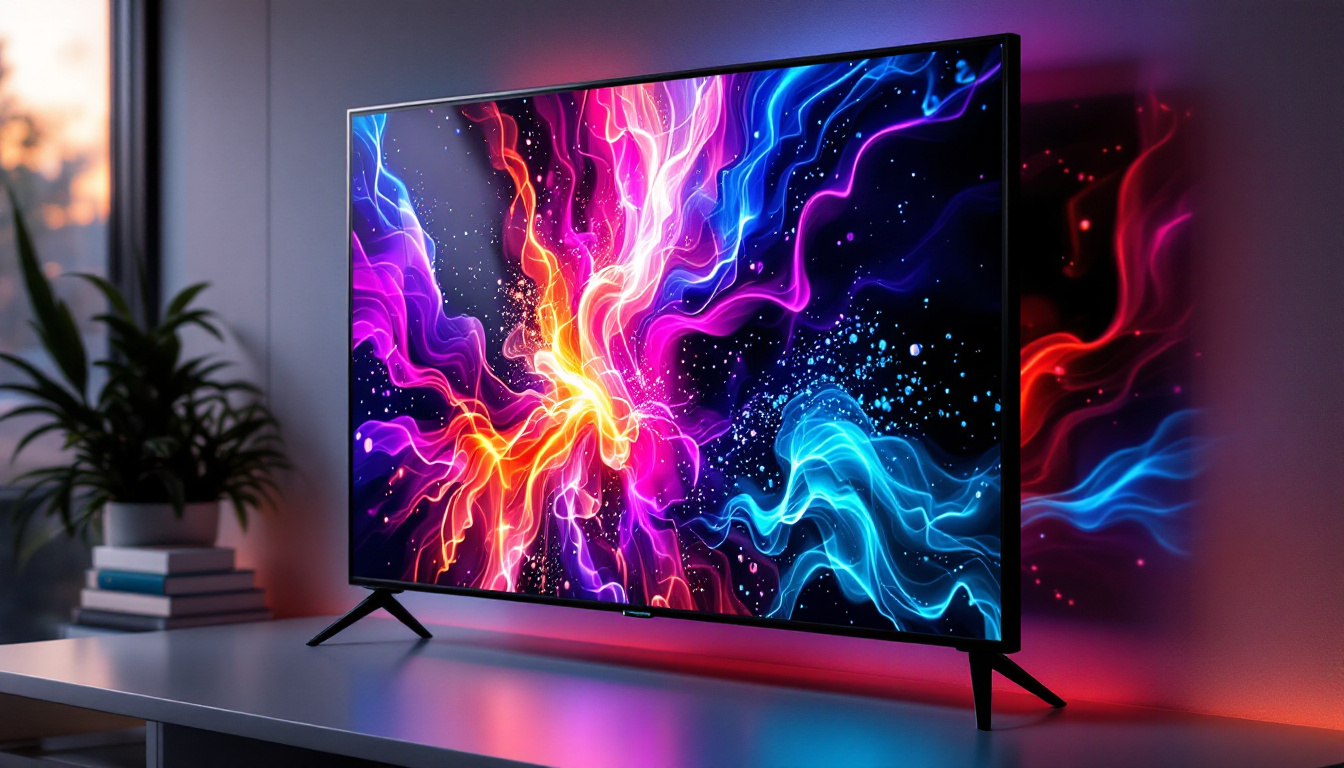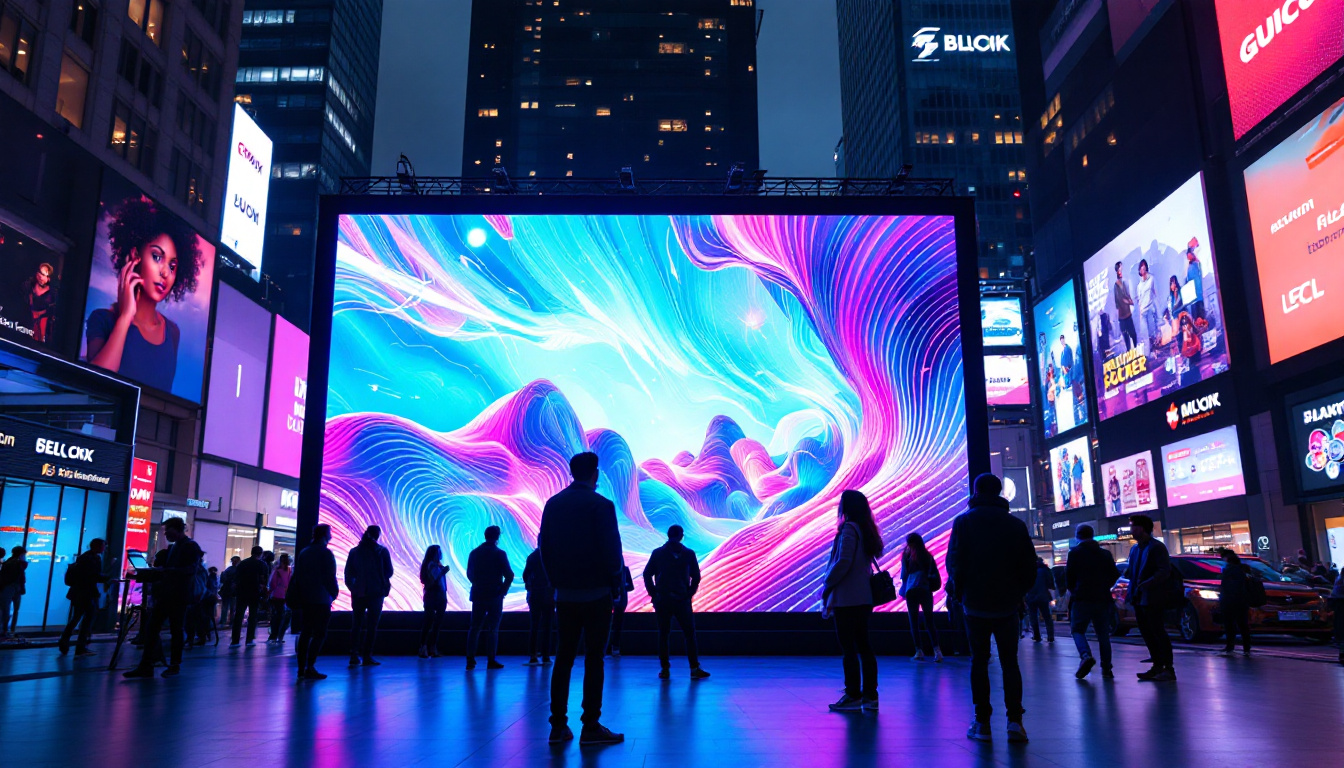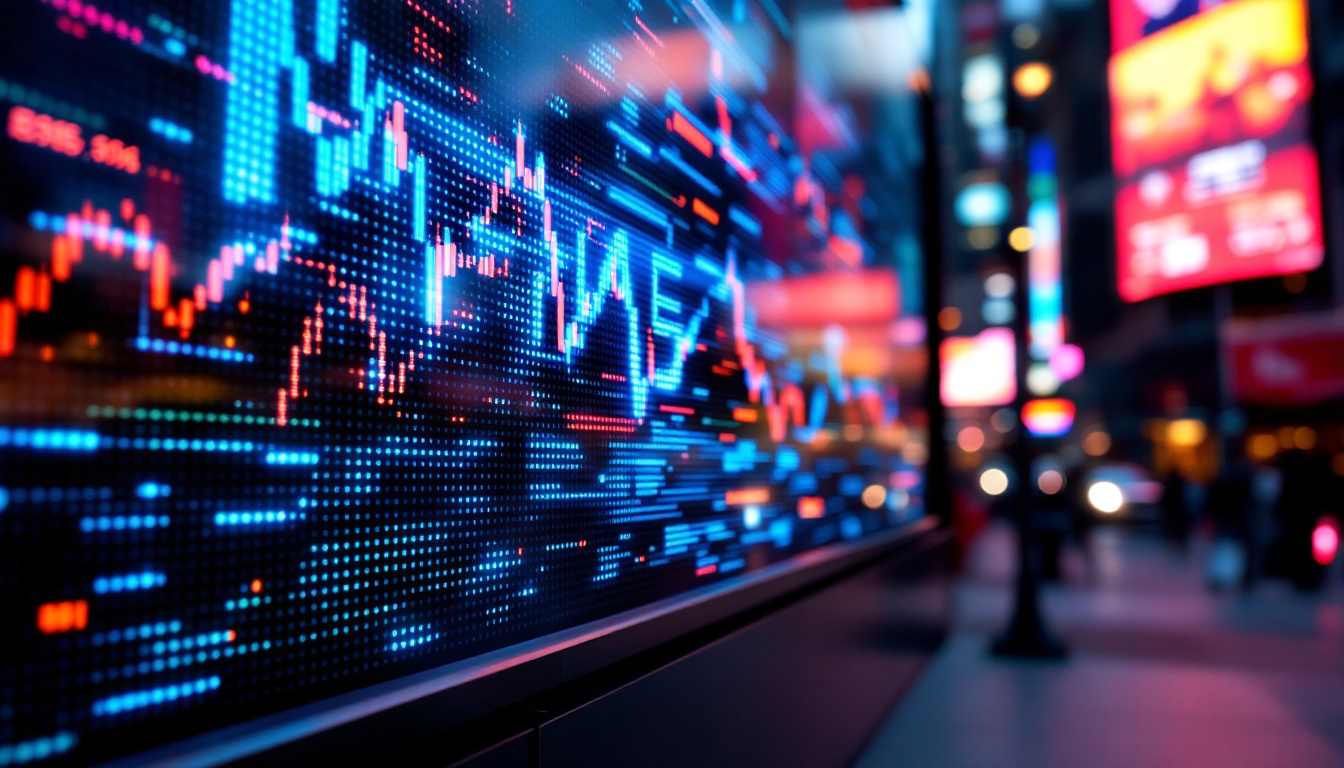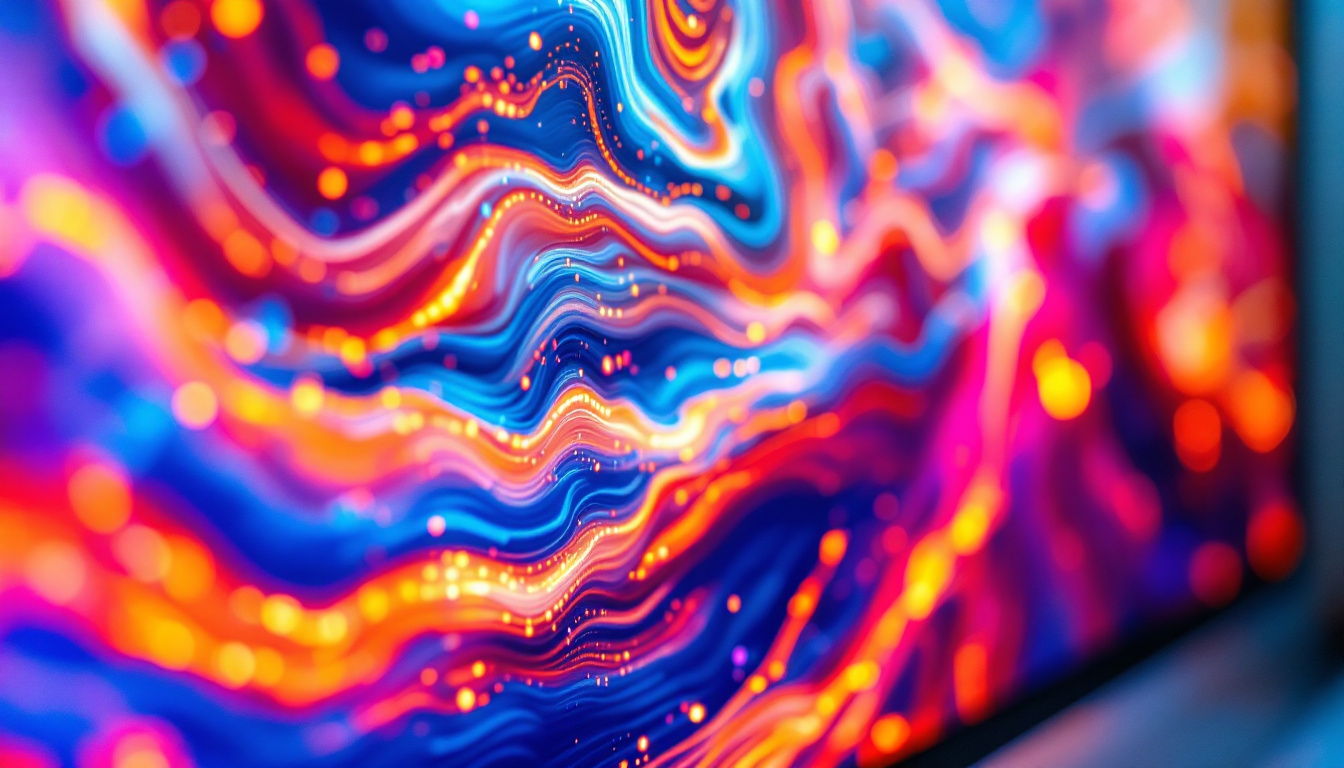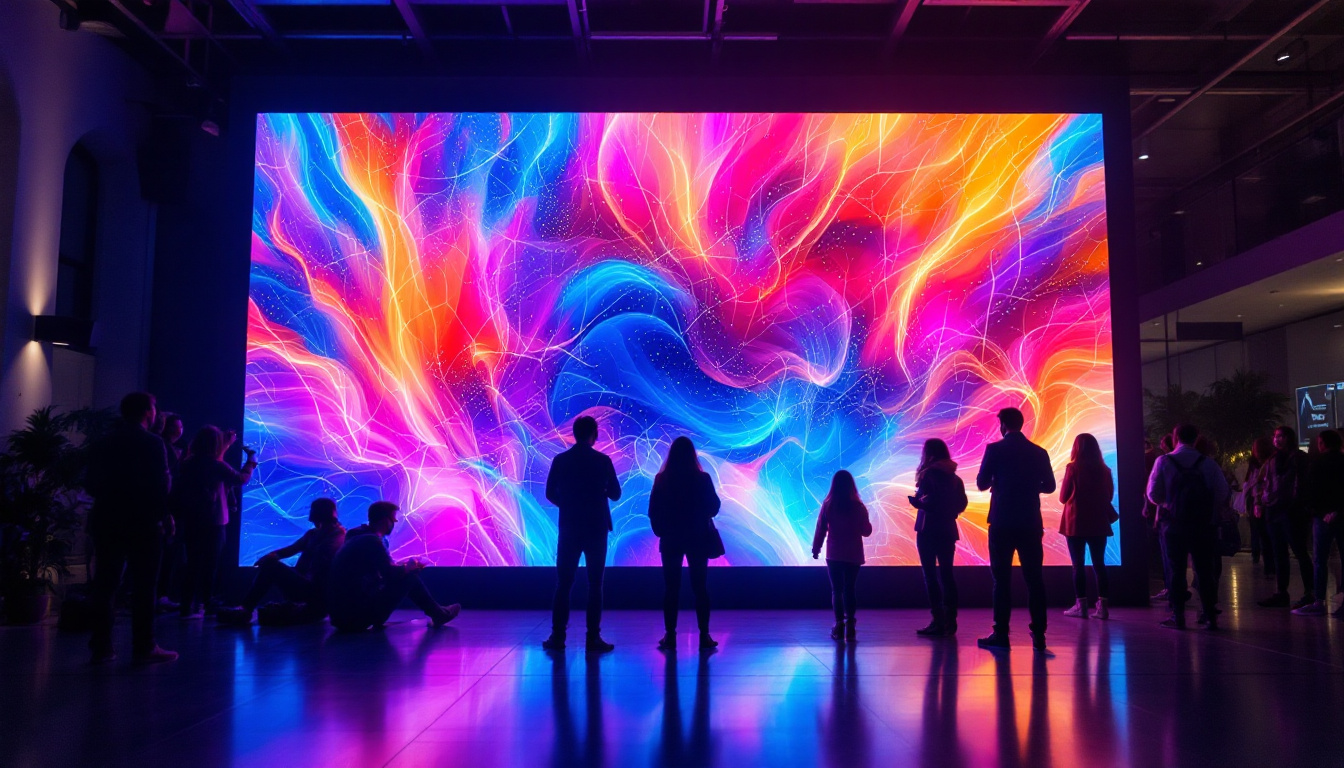In the realm of modern architecture and design, LED displays have emerged as a transformative technology, reshaping the way we communicate information and engage with our surroundings. Standish Hall, a notable example of this evolution, showcases the integration of LED display technology in both functional and aesthetic capacities. This article delves into the intricacies of LED displays, their applications, and the specific innovations seen at Standish Hall.
The Evolution of LED Technology
Light Emitting Diodes (LEDs) have come a long way since their inception. Originally used for simple indicator lights, LEDs have evolved into a versatile technology that powers everything from digital billboards to architectural lighting. The transition from incandescent bulbs to LEDs has been driven by a need for energy efficiency, longevity, and versatility.
Historical Context
The first visible LED was developed in the early 1960s, but it wasn’t until the late 1990s that significant advancements allowed for the creation of full-color displays. This breakthrough opened the door to a myriad of applications, particularly in advertising and public information systems. As technology progressed, the brightness, color range, and resolution of LED displays improved dramatically. Notably, the introduction of blue LEDs in the 1990s by Shuji Nakamura, which earned him the Nobel Prize in Physics, was a pivotal moment that enabled the development of white LEDs, further expanding their use in general lighting.
Technological Advancements
Today’s LED displays utilize sophisticated technologies such as organic LEDs (OLEDs) and quantum dot displays, which enhance color accuracy and energy efficiency. These advancements have made it possible to create thinner, lighter, and more flexible displays, allowing for innovative applications in architecture and design. Moreover, the integration of smart technology into LED systems has led to the rise of smart lighting solutions that can be controlled remotely, adapting to user preferences and environmental conditions. This not only enhances user experience but also contributes to energy savings, as lights can be dimmed or turned off automatically based on occupancy or time of day.
Furthermore, the environmental impact of LED technology cannot be overlooked. As a more sustainable option compared to traditional lighting, LEDs consume significantly less power and have a longer lifespan, reducing waste and the frequency of replacements. The shift towards LED lighting in both residential and commercial sectors has been supported by various government initiatives aimed at promoting energy-efficient technologies. As cities around the world adopt LED street lighting, they are not only cutting down on energy costs but also improving public safety through better illumination. The future of LED technology looks promising, with ongoing research focused on enhancing performance, reducing costs, and exploring new materials that could lead to even more groundbreaking applications.
Understanding LED Displays
LED displays operate on a simple principle: when an electric current passes through a semiconductor material, it emits light. This basic mechanism underpins a wide range of display types, each with unique characteristics and applications. The evolution of LED technology has transformed the way we interact with visual media, providing vibrant colors and sharp images that enhance user experiences across various platforms.
Types of LED Displays
There are several types of LED displays, each suited for different environments and purposes. The most common types include:
- Direct View LED: These displays are made up of individual LED modules that create an image by directly emitting light. They are often used in outdoor advertising and large-scale installations. The modular design allows for seamless scaling, making them ideal for stadiums and concert venues where large audiences gather.
- LED Backlit LCD: In this configuration, an LCD panel is illuminated by an array of LEDs. This type is commonly found in televisions and computer monitors. The backlighting enhances color accuracy and contrast, providing a more immersive viewing experience, especially in darker environments.
- OLED Displays: Utilizing organic compounds, OLEDs offer superior color contrast and flexibility, making them ideal for high-end televisions and mobile devices. Their ability to produce true blacks by turning off individual pixels leads to stunning visuals that captivate users.
Key Features of LED Displays
LED displays are characterized by several key features that make them appealing for various applications:
- Brightness: LED displays can achieve high levels of brightness, making them visible in direct sunlight, which is essential for outdoor applications. This capability is particularly beneficial for digital billboards and signage, where visibility can significantly impact advertising effectiveness.
- Energy Efficiency: Compared to traditional lighting solutions, LEDs consume significantly less power, leading to lower operational costs. This energy efficiency not only reduces electricity bills but also contributes to a smaller carbon footprint, aligning with global sustainability efforts.
- Longevity: LED technology boasts a long lifespan, often exceeding 50,000 hours, reducing the need for frequent replacements. This durability is especially advantageous in commercial settings, where downtime for maintenance can be costly and disruptive.
In addition to these features, LED displays are also known for their versatility in design. They can be manufactured in various shapes and sizes, allowing for creative installations that can fit any space. From curved screens that enhance the viewing experience in theaters to transparent displays used in retail environments, the possibilities are virtually limitless. Furthermore, advancements in technology have led to the development of flexible LED displays that can be bent or shaped to create dynamic visual presentations, pushing the boundaries of traditional display formats.
Moreover, the integration of smart technology with LED displays has opened new avenues for interactivity and engagement. Many modern LED displays come equipped with sensors and connectivity options that allow them to respond to viewer behavior, creating personalized experiences. For instance, digital signage in retail can change promotions based on customer demographics or preferences, enhancing the overall shopping experience. As LED technology continues to evolve, we can expect even more innovative applications that will redefine how we communicate and share information visually.
Applications of LED Displays
LED displays have found their way into numerous sectors, enhancing communication and engagement. Their versatility allows them to be tailored for specific needs, from advertising to information dissemination.
Advertising and Marketing
One of the most prominent applications of LED displays is in advertising. Billboards and digital signage utilize bright, eye-catching displays to attract attention and convey messages effectively. The ability to change content dynamically allows advertisers to target specific audiences and adapt to changing conditions.
Public Information Systems
LED displays are commonly used in public transportation systems to provide real-time information to passengers. Train and bus stations often feature LED boards that display arrival and departure times, ensuring that travelers are well-informed. This application enhances the overall efficiency of public transport systems and improves user experience.
Architectural Integration
In architectural design, LED displays can serve both functional and aesthetic purposes. Standish Hall exemplifies this integration, where LED technology is used to enhance the building’s visual appeal while also providing practical information. The seamless incorporation of LED displays into the architecture creates a modern and engaging environment.
Standish Hall: A Case Study in LED Integration
Standish Hall stands as a testament to the innovative use of LED display technology in architectural design. Located on a prominent campus, the building not only serves as a hub for academic activities but also as a canvas for digital art and information dissemination.
Architectural Design and Aesthetics
The design of Standish Hall incorporates LED displays in a way that complements its architectural features. The displays are strategically placed to enhance the building’s façade, creating a dynamic visual experience for passersby. This integration of technology and design is a hallmark of contemporary architecture, where functionality meets artistic expression.
Interactive Displays and User Engagement
Standish Hall features interactive LED displays that engage visitors and students alike. These displays can showcase a variety of content, from academic announcements to digital art installations. By providing an interactive element, Standish Hall fosters a sense of community and encourages participation among its users.
Energy Efficiency and Sustainability
In addition to their aesthetic and functional benefits, the LED displays at Standish Hall are designed with energy efficiency in mind. By utilizing low-power LED technology, the building minimizes its environmental impact while maintaining a high level of performance. This commitment to sustainability aligns with broader trends in modern architecture, where energy-efficient solutions are increasingly prioritized.
The Future of LED Displays
The future of LED display technology looks promising, with ongoing research and development aimed at enhancing performance and expanding applications. As technology continues to evolve, several trends are emerging that are likely to shape the future of LED displays.
Advancements in Display Technology
Future developments in LED technology may include higher resolutions, improved color accuracy, and even more energy-efficient designs. Innovations such as microLED technology, which offers greater pixel density and flexibility, could revolutionize the way displays are used in both commercial and residential settings.
Integration with Smart Technology
As the Internet of Things (IoT) continues to grow, the integration of LED displays with smart technology is becoming increasingly feasible. Imagine a world where displays can adapt in real-time to environmental conditions or user preferences, creating personalized experiences. This level of interactivity could redefine how information is presented and consumed.
Broader Applications Across Industries
Beyond advertising and public information, LED displays are expected to find new applications in various industries. From healthcare to education, the potential for LED technology to enhance communication and engagement is vast. As industries recognize the benefits of LED displays, their adoption is likely to increase, paving the way for innovative solutions.
Conclusion
Standish Hall exemplifies the transformative power of LED display technology in modern architecture. By integrating these displays into its design, the building not only enhances its aesthetic appeal but also serves a functional purpose in engaging with its community. As LED technology continues to evolve, its applications will expand, offering exciting possibilities for the future.
The journey of LED displays from simple indicators to complex, interactive installations reflects the broader trends in technology and design. As we move forward, the potential for LED displays to revolutionize communication and engagement remains limitless, promising a bright future for this dynamic technology.
Illuminate Your Space with LumenMatrix
As you’ve seen with Standish Hall, LED display technology can transform any environment into a dynamic and interactive space. If you’re inspired to elevate your architectural design or enhance your brand’s visibility, LumenMatrix is your partner in innovation. Specializing in a wide array of LED display solutions, from Indoor and Outdoor LED Walls to Custom and Transparent Displays, LumenMatrix is committed to revolutionizing visual communication. Experience the future of LED technology and discover how LumenMatrix can help you create captivating visual experiences that engage and inspire. Check out LumenMatrix LED Display Solutions today and take the first step towards transforming your space.

